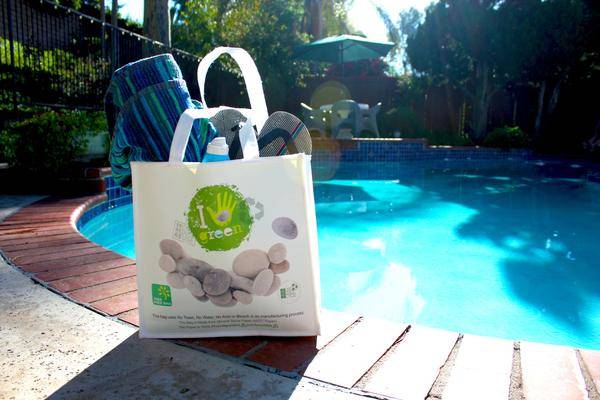The Process:
Our production team collects fallen limestone from Asia (with minimal mining process) and grinds the stone down to a powder form. A small amount of non-toxic polyethylene is added as a binding agent, and Stone Paper can be molded into just about anything that plastic or paper can be made from.
Compared to Traditional Paper:
Properties:
- Waterproof
- Fire Retardant
- Oil Resistant
- Non-Toxic
- Infinitely Recyclable as No. 2
- 100% Photo-degradable

FAQ’S About Mineral Stone (MIST™) Paper
- No trees are harvest in making of MIST™ and it is the Fifth (5th) most abundant element of earth’s natural mineral resources.
- No water utilized during the making of MIST™ Paper, which it also means no water born waste generated.
- No bleach or strong acid used during the making of MIST™ Paper
- Bypasses the polluting and high energy consumption processes of “cooking” and “bleaching” that are required with the traditional papermaking.
- One (1) tons of MIST™ Paper procures one (1) tons of paper, where one (1) ton of Pulp virgin paper requires Four (4) tons of pulp chips to produce one (1) tons of paper.
- MIST™ Paper is 100% Photodegradable or recyclable as #2 HDPE
Focus on the 3R
Stone paper heavily emphasizes and follows the 3R, Reduce, Reuse and Recycle principles also of course covered in the C2C model- material reutilization.

Reduce
The production of stone paper not only eliminates the harvest of trees, furthermore, its revolutionary paper making methods also minimizes water, carbon dioxide and gaseous waste releases.

Reuse
Stone paper is highly water resistant and extremely durable material, thus, it is a product that can be reused over long periods of time. With increasing number of reuses, it also saves on the demands for more resources for production.

Recycle
Recycle or compost? Many people believe composting or biodegradable is the way to go. However, composting the material only makes the material “food” source for organism (cradle to grave). Yes, this can reduce the amount of rubbish, if the product is demanded, then new resources will need to be spent to create the product again. Where resource is limited, is this sustainable? In order to make the product sustainable, an infinite loop (cradle to cradle) needs to be achieved, that is creating product from recycled material, whether the recycled material is from in-house or from the recycling stream is the key. As stone paper is an inorganic material vastly made up of “stone”, it can be repeatedly recycled over and over again. Besides recycling stone paper, if unfortunately, stone paper is not recycled and instead thrown out into nature, stone paper will photo-degrade when left under the sun for approximately 1 year. This is of course not the most ideal method in stone paper recycle process, however, the photo-degradability feature at least minimizes the hazards this material causes to the living creatures in our environment. Stone paper has been certified for its material content, recyclability, and manufacturing characteristics by C2CCertified.org (licensed by C2CPII) and have achieved the silver grade rating. Via further improving recognition in social responsibility along with other eco-goals LM hopes to further strengthen the infinite loop of cradle to cradle. If stone paper is not recycled or photo-degraded, it can also be recycled via incineration in the furnace. Unlike pure plastic products, stone paper does not adhere to the furnace walls resulting in faster wear and tear on the furnace. Furthermore, when incinerated the stone paper returns to stone powder (calcium carbonate), this can then be recycled and reused. Please note the reuse percentage can differ through differing channels.

